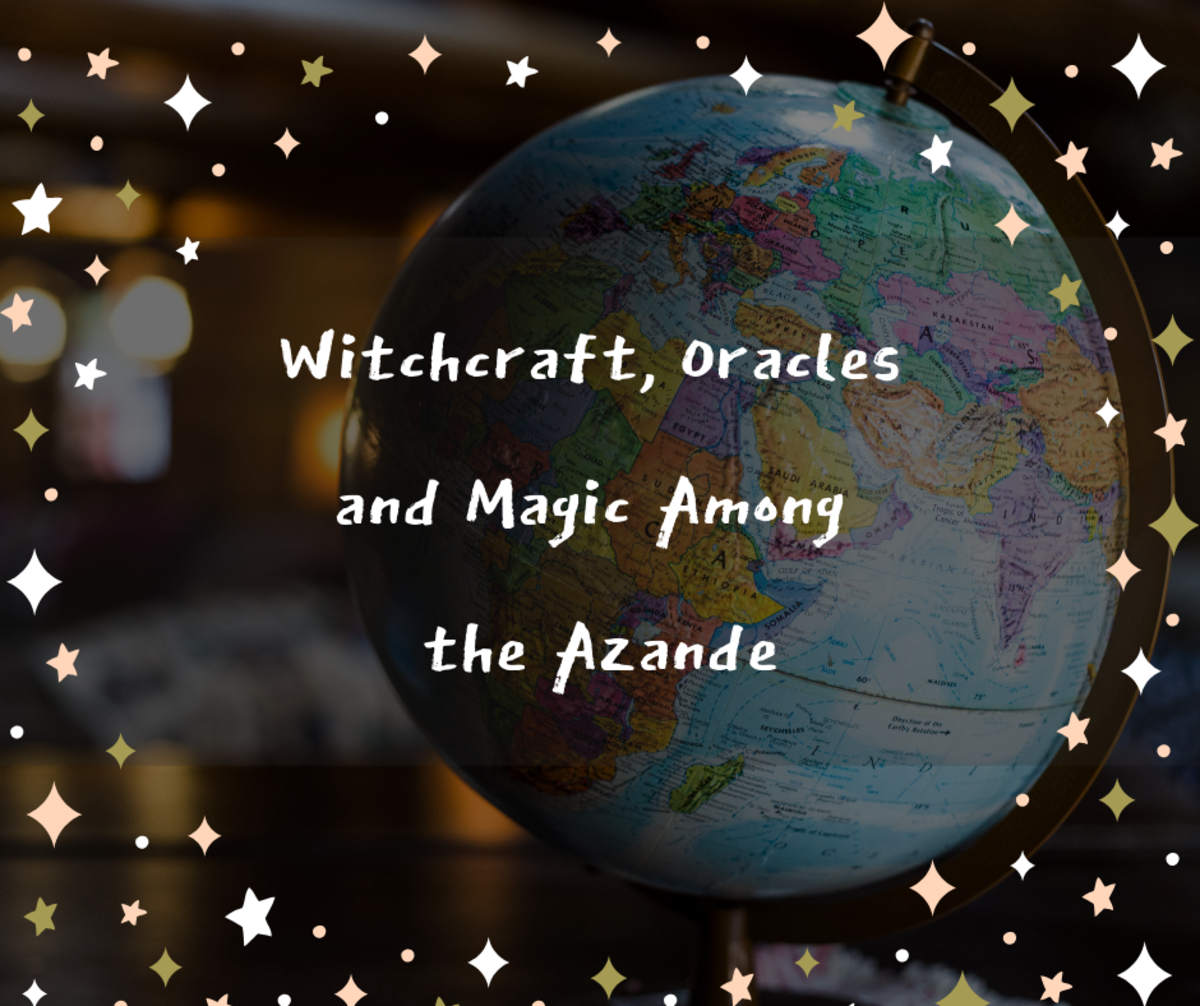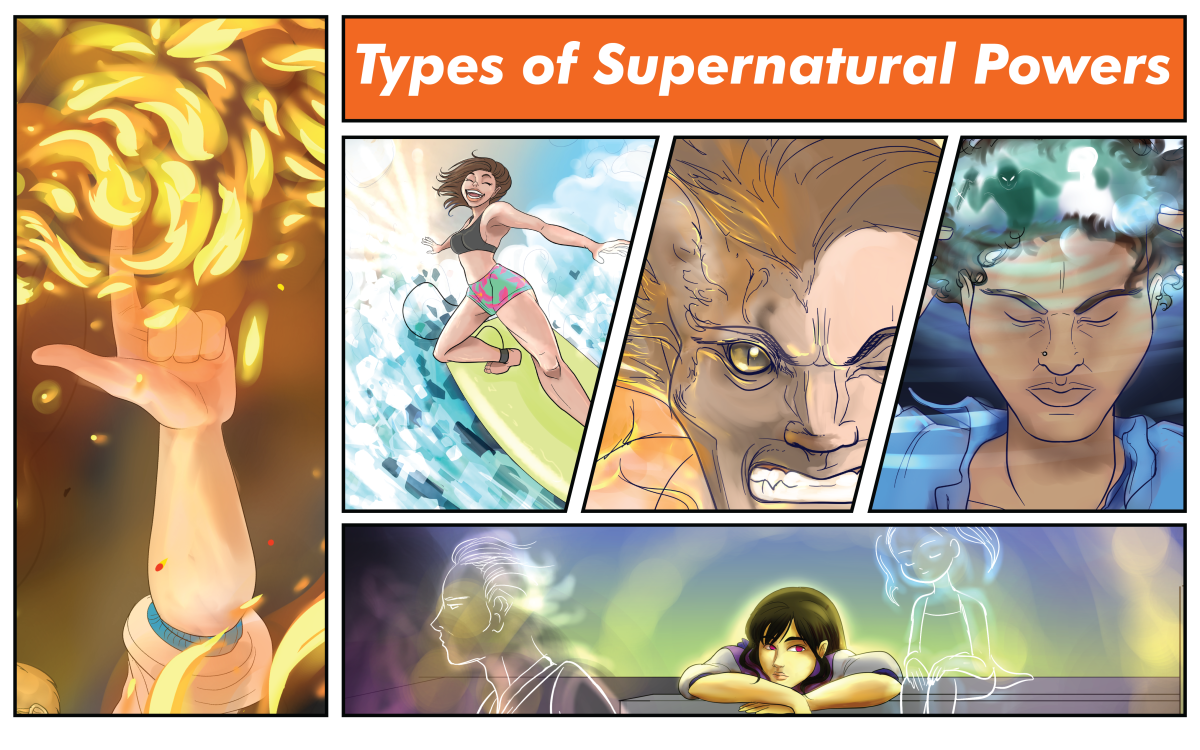The Third Reality

Why Three Realities?
Most people live in one of two very different realities, which we can call either 'religious' reality or 'atheist' reality. 'Religious' reality generally describes a world which was created by a (usually male) god, unseen and omnipotent, while the 'atheist' reality believes the world was created by pure chance and anything that happens in it is the result of rigid physical laws.
Although many people are very sure which camp they belong to, there are others are unsure and mix the two different realities in their lives. This was true of two of the world's most famous scientists, Isaac Newton and Albert Einstein. Both were very religious men, and in the case of Isaac Newton, most of his writings were about religion and alchemy
Yet his scientific discoveries about the laws of motion and gravity became the foundation of atheist beliefs, during the 18th and 19th centuries. Einstein updated his work, found new physical laws which still hold good today, but still believed in a God.
The third reality is a magical one, in which people can interact with and influence the spiritual realm which underlies our material world. This way of looking at the world is still accepted in places like Africa where people still believe in the power of witch doctors and unseen spiritual powers. It is also accepted in the occult and New Age groups in the West, though such groups are a small minority and not part of mainstream reality.
The problem with either traditionally religious or atheist realities is that both make people feel powerless. Much of religious reality is basically fatalistic. It's claimed that everything that happens to us, “Is but the will of Allah, (or God)”. It believes that an all-powerful god created the world and we are totally helpless in the face of this omnipresent power. It's true that some people seem to be able to defy the will of God, but only because there is another powerful entity called the Devil, who makes people do bad things. The result is that humans become pawns in the conflict between these two all-powerful forces. They have no power of their own.
Atheists assert that there is no god, physical reality is all that exists and the universe was created by pure chance, in an explosion called 'The Big Bang'. Life on Earth was created by random chemical reactions and intelligent life was produced by billions of years of evolution. Again, this is a fatalistic reality in which our lives are controlled by physical laws and in particular, our genes. If we have good genes then we are healthy and successful but if we have bad genes then we are unhealthy and a failure. In one well known book called, “The Selfish Gene”, by Richard Dawkins , the author says that the only purpose and meaning of life is to pass on our genes to the next generation. It's not exactly an inspiring idea
People who accept either the religious or atheistic realities feel totally powerless in the face of an all-powerful god or an uncaring mechanistic universe, but the third reality of magic gives us the possibility of empowerment
So what is magical reality like? Most people only know about magic from stage magicians, Harry Potter stories or stories about witch doctors, and dismiss it as nonsense. Stage magicians are only using conjuring tricks; Harry Potter stories are fantasy stories from the mind of J.K.Rowling, and witch doctors are just uncivilised pagans with primitive and superstitious beliefs. Yet we can see from the popularity of the Harry Potter stories that there are many people who are greatly fascinated by magic
Magical beliefs are commonplace in most primitive stone-age tribes, who saw no dividing line between the seen and unseen worlds. These beliefs were first attacked by religions like Christianity, Buddhism and Islam, then by atheistic science, which declared that magic does not exist. In Europe there was a very violent campaign to eradicate magic completely, through the infamous witch-hunts. In this brutal campaign, millions of women were tortured, hanged or burnt alive, because it was claimed they were witches. Then in the 18th century, through the rise of science, magic was dismissed as primitive superstition. It was forced underground and only existed in occult secret societies like Freemasonry, the Rosicrucians and Alchemy.
Just at the point when it seemed magic had been eradicated completely from the minds of ordinary people in European countries, it made an unexpected comeback.
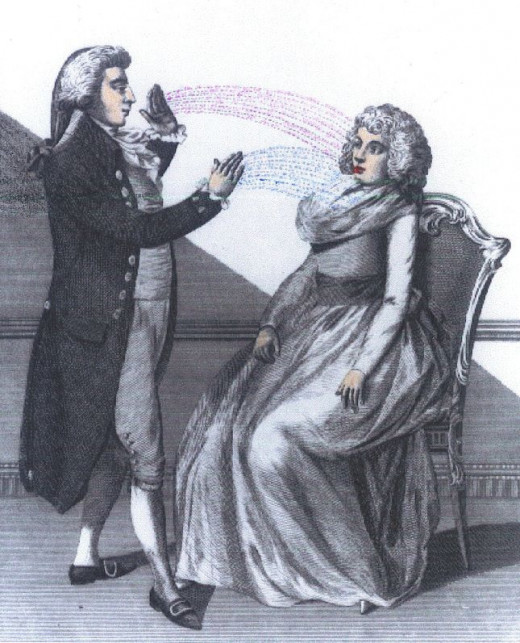
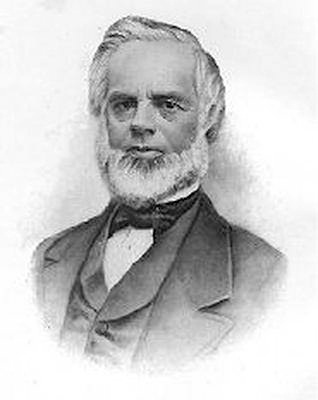
Mesmerism
In the late 18th century some doctors began to experiment with magnets as a way to cure people and a few claimed success in using this treatment. One of these doctors was Franz Anton Mesmer. At first he used magnets to heal people, then unexpectedly discovered he could get the same results by simply using his hands.. Based on this evidence, he formed the theory of ‘animal magnetism’.
Although he was successful in helping some people, his treatment and theories were so controversial that he had to leave Vienna and move to Paris. There, he continued his treatments. It was said by some that he would dress up as a wizard and even use a magic wand to cure his patients. But although he was a great success and was able to heal many of the rich and wealthy in high society, his methods upset more conventionally- minded doctors and he was never fully accepted.
A commission was set up to investigate Mesmer's treatment, (which included Benjamin Franklin who was living in Paris at the time). It managed to disprove his theory of animal magnetism and discredited him, but in doing so, it also, ‘threw the baby out with the bathwater’. There was no explanation of his great success in healing people and no attempts to replicate it.
Mesmer was forced to retire to Switzerland. Yet this was not the end, because a few doctors were sufficiently impressed with his cures to attempt to imitate what he had done. This created the practice of 'Mesmerism'. Unfortunately, it wasn't long before his techniques moved out of the hands of doctors into those of more dubious characters like public entertainers and became devalued
In the 19th century Mesmerism travelled to the USA and was taken up by a man called Parkhurst Quimby. He became a stage Mesmerist and had an act similar to a modern stage hypnotist. But because Mesmerism was associated with healing, sick people would come to him after his act and ask him to heal them. At first he didn't take this too seriously. He went through Mesmerist healing techniques to satisfy the demands of these people, but to his surprise they worked. This baffled him at first as he attempted to try and understand why they did effect a cure. He rejected completely Franz Mesmer’s ideas of animal magnetism, and eventually formed a completely new theory.
Quimby decided it was the mind that cured people and it was the mind that caused people to become ill in the first place as well. He set himself up as a doctor. When people came to him for treatment, he invented a plausible reason why they were ill and then invented another plausible reason why they could be healed. He reasoned that once he gave people confidence that they would get better as a result of the treatment he recommended, then the person’s mind would produce the healing. (Strangely, even many modern doctors do something similar. In a recent survey it was discovered that a large number of doctors routinely give their patients Placebo pills. They often work.)
- Phineas Parkhurst Quimby Resource Center
Phineas Parkhurst Quimby - Site dedicated to the COMPLETE TRANSCRIPTS of Phineas Parkhurst Quimby's Writings. Park was born on February 16, 1802, in Lebanon, New Hampshire, and died on January 16, 1866, in Belfast, Maine
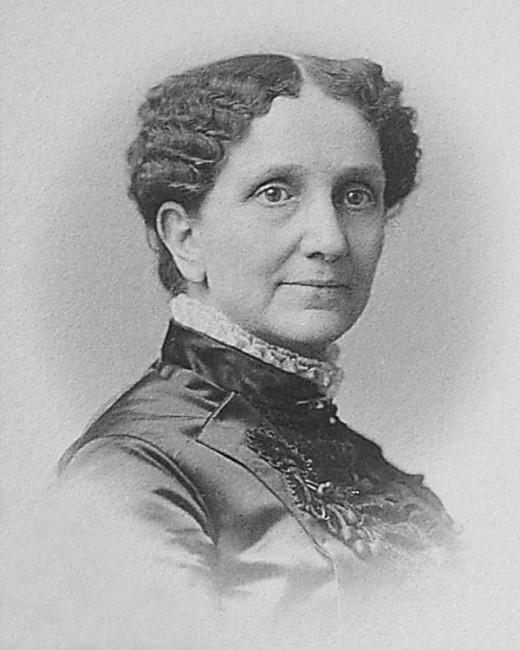
Christian Science
Quimby may have been forgotten as just another quack doctor, except that he cured a very controversial character by the name of Mary Baker Eddy. She had been an invalid for a long time, and had tried many different remedies. Quimby was a last resort.
Unexpectedly he cured her. Most normal people will accept any help they might get from a doctor or healer, without question, but Mary Baker Eddy was no ordinary person. She wanted to know why Quimby was successful. He tried to explain his theory, that it is the mind that heals people, but she had a problem with this explanation because she was a committed Christian.
In her mind, one had to be a great spiritual person like Jesus Christ to be a healer. When it became clear to her that Quimby was just a very ordinary fallible human being, she lost interest in him. However, even though she rejected his explanation at first, his ideas were to have a great influence on her life, and she later Christianised his theories.
When Mary Baker Eddy returned home after her treatment by Quimby, things went badly for her. Her old symptoms returned in force. Then one day she slipped on ice and hurt herself badly. A doctor was called, who said that she was so severely injured he could do nothing for her. Confined to her sickbed, she consoled herself by reading the Bible and after reading one passage about a healing performed by Jesus she was inspired to get out of bed and dress herself.
When she went downstairs, the people she was staying with, became concerned and said she was too ill to be up. She argued against this but during the argument she suddenly fainted and had to be taken back to bed. The next morning she done the same and got out of bed and again she had to have an argument with her hosts, but this time she stood firm and declared strongly she was now completely healed. And apparently she was.
It would take a book to tell the whole story of Mary Baker Eddy, but suffice it to say that she went on to create the controversial Christian sect, 'Christian Science'. One of her favourite sayings was similar to Buddhist ideas about our reality being an illusion, or 'Maya' and says,
“Matter has no reality; all is infinite mind”.
- Christian Science
Official website about Christian Science, provided by The Church of Christ, Scientist, founded by Mary Baker Eddy.
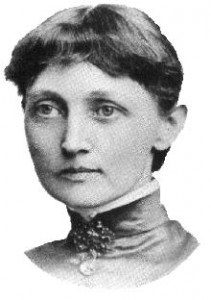
New Thought
One of the recruits to her new sect was Emma Curtis Hopkins. At first the two women got on very well together and she became the editor of the “Christian Science Journal”. Then Hopkins found out about Mary Baker Eddy’s association with Parkhurst Quimby. She began to study his teachings, with a view to writing an article about him.
This made Mary Baker Eddy very angry. She claimed that her teachings had absolutely nothing to do with Quimby and forced Hopkins out of the organisation she'd created. Undeterred, Hopkins moved to Chicago and started her own version of Christian Science. Because she was far more open- minded than Mary Baker Eddy she was willing to accept Parkhurst Quimby’s theories. She combined his ideas, her own and Mary Baker Eddy's in a movement called ‘New Thought’.
Emma Curtis Hopkins had a fundamental disagreement with Mary Baker Eddy over the latter's assertion that, “matter has no reality”. She claimed that matter does have reality, because we create it, and to us it is very real indeed.
Three organisations arose from Hopkins teachings, called 'Divine Science', 'Unity' and 'Religious Science'. For this reason she became known as "the teacher of teachers". These organizations were not as dogmatic or rigid as Christian Science, but all of them accepted the premise that it is our thoughts that create illness and it is thought that will heal us. 'New Thought', like Christian Science, started off with an interest in physical healing, but soon accepted the idea that whether we are rich or poor also depends on the way we think. In time this inspired many positive thinking books from authors like Napoleon Hill and Norman Vincent Peale.
Positive thinking books are still being written and sold today. They have been used widely in both the sporting and business world, as a way of steering us towards winning or becoming wealthy. As many New Thought authors have discovered, if you write a book about a deeper understanding of metaphysics or even just about healing, very few people will read it.. But if you produce books called “Think And Grow Rich”, (Napoleon Hill) or “How to Win Friends and Influence People” (Dale Carnegie), you will find many readers who want to find easy solutions to their practical problems.
- Divine Science
Divine Science links, history of Divine Science, helpful resources about Divine Science and New Thought - the method and process of understanding ones' Divine Unity or Oneness with God.
- Welcome to Unity: A Positive Path For Spiritual Living.
Unity helps people of all faiths apply positive spiritual principles in their daily lives. Home of Silent Unity prayer ministry, Daily Word magazine, Unity Magazine, Unity Institute, and SpiritPath retreats.
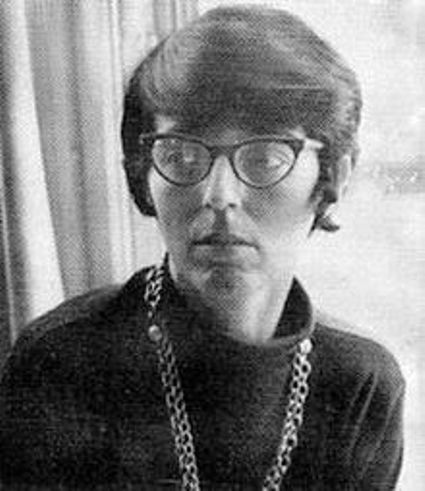

The Channellers
In the 20th century both Christian Science and the New Thought organizations stagnated. They are all still in existence but not attracting much in the way of new recruits. It was time for a new message spelling out the same truth that Quimby, Eddy and Hopkins had pointed out
In the late 1960s it came through a trance medium called Jane Roberts, who wrote a book called, “Seth Speaks”. She dictated this book to her to husband, while she was in a trance, channelling a spiritual entity called Seth. Seth was to utter the famous phrase. –
“You create your own reality”.
Many books continued the Jane Roberts/Seth partnership, like, “The Nature of Personal Reality”, and “The Unknown Reality”, all of which reiterated the same central idea; that our thoughts create our reality. If we choose to change our thoughts, then we will change our reality as well. Jane Roberts continue to write books either with Seth, or on her own, until her death in 1984
In the 1970s another famous channelled book was published, called “A Course In Miracles.” The trance medium in this case was Dr Helen Schucman, an Associate Professor of Medical Psychology. The book was written using traditional Judeo-Christian terminology and in many ways is very similar to Mary Baker Eddy's “Science And Health.” It follows the same theme - that we create our own reality through what we choose to think and we can consciously change our reality by thinking differently.
In the mid 1980s another trance medium called Esther Hicks arrived on the scene. She began to dictate insights channelled by an entity called Abraham. She and her husband Jerry had read the 'Seth' books by Jane Roberts, and their partnership followed on where Jane Roberts/Seth left off. Although Seth said quite a lot about the fact we create our own reality, he didn’t really say much about how exactly we do this. Jerry Hicks asked Abraham for more detail through his wife Esther. From the Esther Hicks/Abraham books and recordings, we get a much better idea of how people create their own realities and what to do to change them
Magical reality allows people to empower themselves, but it's frightening to many people. What you make of your life is down to you and the thoughts you have rather than being imposed by a god or being an accident of an indifferent universe. Once your part in shaping your reality is accepted, you can become frightened of your own thoughts or even the magical power of other people.
These difficulties can be seen in the early days of Christian Science. Because of Mary Baker Eddy's authoritarian attitude, many people left her organisation and started up similar ones of their own. Eddy became convinced that some of these people were using what she had taught them in a negative way and were attacking her on the psychic level. Because of this, the history of the early days of Christian Science reads like something out of an occult novel. When her husband Asa Gilbert Eddy died, for example, she blamed it firmly on “malicious animal magnetism” from her former pupils
I have to admit I've been caught up in a psychic war myself. For a while I was part of a witch’s coven which was attacked on a psychic level by another coven. What I learned is that there is a lot of deception involved in situations like this. Most successful psychic attacks are done at the verbal level by undermining another person’s confidence and talking them into self-destructive thought patterns or behaviour. Sportsmen do it to each other all the time, as they try to ‘psych out’ their opponent and so of course do traditional witch doctors when they try to 'put a spell on you'.
It's an unfortunate fact that witch doctors in modern or Stone Age tribes have abused their power by cursing people they don’t like. The people who are cursed or hexed become so frightened of the power of the witch doctor, that they begin to think in very negative ways and end up destroying their own bodies through the power of their own minds. They don't realise that the witch doctor has only the power of suggestion to hurt them. (Modern Western doctors can unwittingly pull off the same trick, by telling a patient he has only a few months to live. If the patient has great faith in the power of doctors he will believe what is told to him and die within the same time frame dictated by the doctor.)
Abuses of power have given magical reality a bad name. Voodoo, for instance, is largely seen as something dark and evil, but as with anything else, it's only a minority of Voodoo priests who have misused their effect on believers and given the religion a bad press.
A Course in Miracles
Web-Site on Jane Roberts and Seth
- Welcome to SethLearningCenter.com
Seth: the greatest spiritual teacher of our time
Abraham./Hicks web-site
- Home of Abraham-Hicks Law of Attraction -- It All Started Here!
The original source material for the current Law of Attraction wave that is sweeping the world, and it is the 21st century inspiration for thousands of books, essays and lectures that are responsible for the current paradigm shift in consciousness. A
Taking Control of your Life
Another problem people find with the third reality is that once they are told that their thoughts and feelings create their reality, they can become frightened of their own thoughts, especially when they realise how negative most of them are. But controlling one's thoughts is not any different from learning other skills. A person who learns to type, drive or play a game like table tennis, will find they are completely useless at the beginning. With practice and perseverance they become much better fairly quickly. Taking control of your own thoughts is difficult at the start, but it can be learnt. This is why many Eastern religions teach meditation. It's a powerful tool in learning how to quieten the mind and take charge of our thoughts.
A third reason that makes it difficult for people to accept magical reality is contained in the phrase made famous by Spiderman - “with power comes responsibility”. It 's normal for us to blame our misfortunes on other people, fate, God or the Devil. Those who accept magical reality can't do this without giving their power away. We only have one enemy in our lives, ourselves. If we try to accuse others, we are saying that they have power over us. It's better, but not necessarily easy, to accept that our fate is in our own hands and that our life is always what we make it. No-one else is to blame.
The last thing someone dying of cancer wants to hear is that it is their own mind causing the cancer. The same would be true for someone living in poverty. Who wants to be told that they have chosen to be poor? Unfortunately, this can be the attitude of those who have taken up positive thinking and made a success of it. They can become contemptuous of poor or sick people, claiming that they are the authors of their own misfortune. Such unloving attitudes give positive thinking a bad name. It's much better to point out to people that whatever their situation, they can change it for the better, because they created it in the first place.
Religious and atheistic realities are easy to accept. Although you can feel totally powerless living in such realities, at least you don’t have to shoulder responsibility for your own problems. You can blame God, the government or the laws of Nature. In the end, magical reality is the only one in which there is some personal responsibility. If it is our thoughts that create our world, only we can change them. We are forced to take responsibility for everything that happens to us, tough though that might be.
Most of us have been brought up to believe in either religious or atheistic realities, though some people live in a mixture of both. That can be complicated and confusing enough, but if you add another reality to this, it can make the confusion even worse. This is generally what happens when people first start to explore magical reality. They attempt to take control over their own minds, only to discover that most of what they believe comes from their childhood, with additions from adult life bolted on. They find themselves partly living the truths taught to them as children, some new ideas acquired as they went out into the world and the new reality they have now chosen to adopt. As a result, some people can find themselves living in a baffling world of three different realities. Many give up at this point and go back to the safety of traditional beliefs.
We are all influenced by many different ideas and beliefs, coming from our parents, friends, school, TV, books and now the internet. We end up with a hotchpotch of contrary thoughts and beliefs. Since our thoughts create our reality, we can find ourselves living in a muddled and inconsistent reality, reflecting the divisions in our minds. It's not surprising that there are those who turn to very rigid religious sects, dogmatic atheism or to the worship of scientific facts. At least these create fairly consistent beliefs and realities for the people adhering to them and make the world look predictable and safe..
As Esther Hicks explains, "beliefs are only habitual thoughts". It is these habitual thoughts that create our personal realities. What we were taught in childhood and the new beliefs we may have formed since indoctrinate us into a way of looking at the world. They are hard to change because we're largely unaware of them. So it's not just a matter of accepting the idea that, "we create our own reality", to make it work for us. We have to indoctrinate ourselves into accepting these new beliefs through new habitual thoughts, just as we did when we were children. This is why many self-help books advocate affirmations, which can reprogramme our minds into new beliefs and so create the reality we want.
Accepting magical reality can be hard work for those brought up to believe in either religious or atheistic realities, but it's the only option, if you wish to empower yourself and take charge of your own life. Do it, as the advert says, 'because you're worth it'.
Esther Hicks interviewed by Oprah Winfrey
Astonishing Power of Emotions, Esther Hicks
The Law Of Attraction, Esther Hicks
© 2008 William Bond




